Xeriscape Landscaping Plants For The Arizona Desert Environment.
Pictures, Photos, Information, Descriptions,
Images, & Reviews.
Cactus.
Queen of the Night Cactus.
Cereus hildmannianus.
We Are Proud Of Our SafeSurf Rating!
Click On Any Of The Following Links By Amazon.Com
For Books, & Videos About Wildflowers Of Arizona & The Southwest USA. No Obligation!
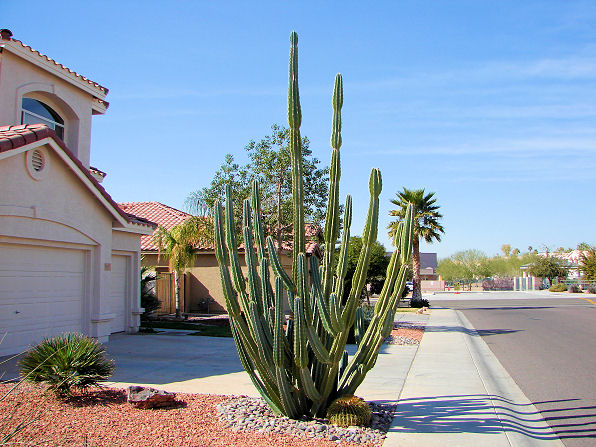 |
| Queen of the Night, Cereus hildmannianus. Photo February 2, 2006. |
|---|
 | 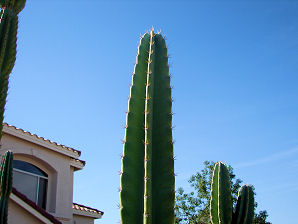 |
| Queen of the Night. Cereus hildmannianus. | Queen of the Night. Cereus hildmannianus. |
|---|---|
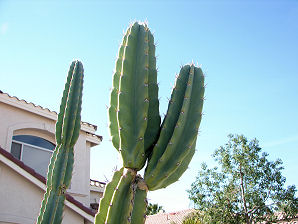 | |
| Queen of the Night. Cereus hildmannianus. | Queen of the Night. Cereus hildmannianus. |
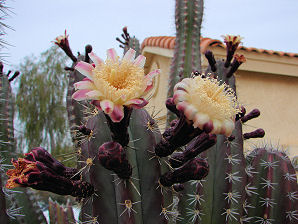 | 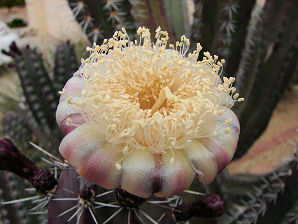 |
| Queen of the Night. Cereus hildmannianus. | Queen of the Night. Cereus hildmannianus. |
 /
/

Queen of the Night Cactus.
We wish to thank Wikipedia, the free encyclopedia for some of the information on this page. We share images and information with Wikipedia. Columnar, basally branching from the base, are slow growing up to about 30 feet tall. The stems 4 to 8 inches in diameter; with 5 to 8 ribs, which are divided into segments. The stems clump up to 15 feet in diameter in a tree like shape. Usually there are no spines on the younger stems, the spines grow progressively as the stem ages. They are blue-green in color when young, becoming duller green with age. Very attractive for landscape use. It is also less frost resistant, and should be protected below 25�F. The Queen of the Night blooms at night at the end of the spring on the 'hairy' part of the stems. The flowers are white, about 10 � 12 inches long, & up to about 6 inches in diameter. They open at night & close around mid-morning. The large, red, egg shaped fruit is red, with a red pulp, that split open when ripe.
Quick Notes:
Height: Height to about 30 feet. Spreading to about 15 feet.
Flowers: 10 � 12 inches long, & up to about 6 inches in diameter, white, flowers opening at night.
Blooming Time: April - September.
Fruit & Seeds: Red, egg shape, with a red pulp.
Leaves or Segments: Green stems stems have 5 to 8 narrow ribs with areoles about 1 - inch apart. They are 5 - 7 inches in diameter. Depending on the variety, the areoles are either almost spineless (as with C. hildmannianus) or with 7 radial spines and a central spine, measuring around 2/5 inch long.
Spines: The trunk and branches have 11 to 17 ribs covered with many areoles of 20 to 30 gray spines, as they become older. The new spines are from pink to dark red to purple before turning gray.
Fruit: Red, Up to 1" long and 3/4" in diameter fruit which is edible.
Seeds: Black oval - about 1/32 inch in length.
Found: Native to southern South America. Its distribution is uncertain but probably includes Brazil, Paraguay, Uruguay and Argentina. The USDA claims it is native to the USA (HI), USA+ (PR).
Elevation: 0 - 2,600 Feet.
Hardiness:
Soil pH requirements:
Sun Exposure:
Habitat: Sandy flats. A Xeriscape Landscape plant.
Miscellaneous: Photos Taken February 2, 2006 At Arrowhead Ranch, Glendale, Arizona.
|



We Are Proud Of Our SafeSurf Rating!
Click On Any Of The Following Links By Amazon.Com
For Books, & Videos About Xerioscape Plants Of Arizona & The Southwest USA. No Obligation!
Back To Arizona Xeriscape Landscaping Main Page.
Back To Xeriscape Cactus Page Three.
Back To Arizona Wild Flowers Home Page
Back To DeLange Home Page
© 1966 - Present, Audrey, Eve, & George DeLange
| © 1966 - Present, Audrey, Eve, & George DeLange |


